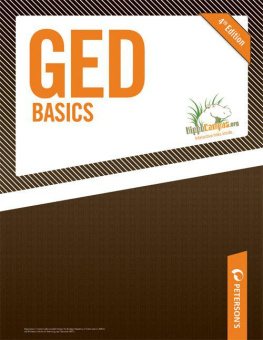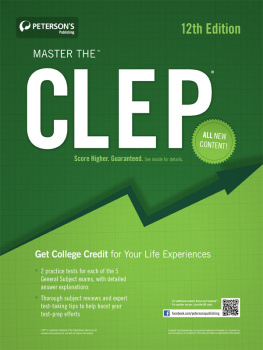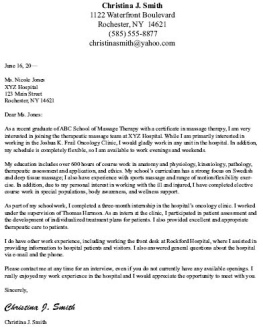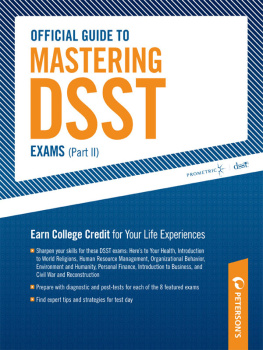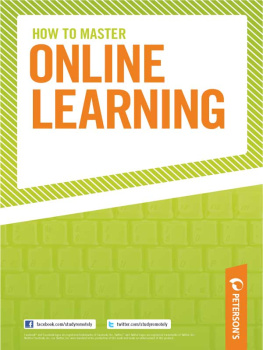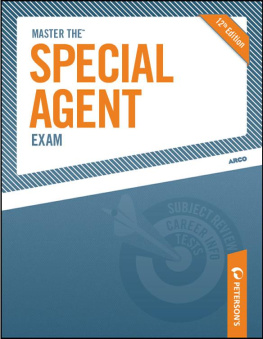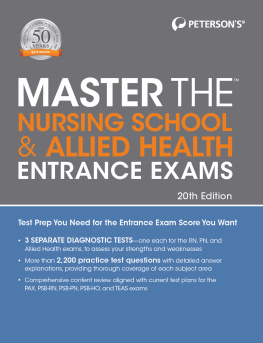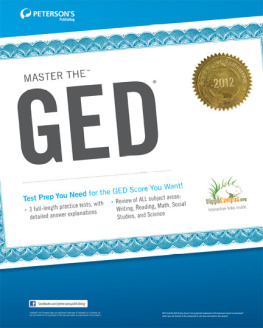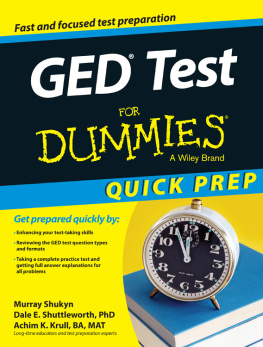Copyright 2010 by Petersons, a Nelnet company
All rights reserved. Except as permitted under the U.S. Copyright Act of 1976, no part of this publication may be reproduced, distributed, or transmitted in any form or by any means, or stored in a database or retrieval system, without the prior written permission of the publisher.
Petersons a Nelnet Company
2000 Lenox Drive,
Lawrenceville, NJ 08648
Visit our website at www.petersons.com
First eBook Edition: August 2010
ISBN: 978-0-7689-3258-4
Petersons 30 Days to the GED
Petersons Master the GED: Language Arts, Reading
Petersons Master the GED: Language Arts, Writing
Petersons Master the GED: Mathematics
Petersons Master the GED: Social Studies
Petersons Master the GED: Science
Petersons Master the GED 2011
Petersons GED Success
Contents
CHAPTER 1
Congratulations on taking the first step to advancing your academic career. Whether you are taking the GED Tests to prepare for college entrance or looking for the career opportunities that become available after completing the GED Tests, you are not alone. From 1942 to 2009, an estimated 17 million people earned their GED credential. It is estimated that in the United States today, 1 out of every 7 high school students will complete their education by taking the GED Tests.
Each of the chapters in this guide deals specifically with one of the elements of the GED. At the beginning of each chapter, you will find study tips for each component that will help you review the material efficiently and prepare for the test. Following the study tips are tutorials for every subsection of the GED. Finally, each subsection includes practice exercises and a mini-test so you can track your progress. The answers to the tests are included in each subsection as is an explanation of each answer. By testing yourself periodically and fully understanding the answers to the test questions, you will ensure that you are able to answer each type of question that arises on the test. You may find that keeping a notebook handy while you go through the guide is a good idea. Jotting down terms, examples, and definitions as you go along will help you to remember concepts and key points.
When you have completed the subject reviews and practice test questions presented in this book, you may want to continue your studies with the companion book, Master the GED. Like GED Basics, Master the GED offers lessons that will help you develop skills that are essential to passing each test, and the individual subject reviews will help you become comfortable with the knowledge areas covered on the tests. Master the GED also features example questions throughout the lessons, along with the books diagnostic and practice tests. Both GED Basics and Master the GED offer plenty of practice, with the types of questions you will encounter on the actual GED.
What Is the GED?
GED stands for General Educational Development. GED Tests are standardized tests that measure skills required of high school graduates in the
United States and Canada. These tests are designed to measure adult basic knowledge in five content areas (Language Arts, Reading; Language Arts, Writing; Social Studies; Science; and Math). The test is an opportunity for you to earn the equivalent of a high school diploma without having to return to a formal school setting. A GED certificate can be useful for gaining admission to college, for obtaining certain vocational licenses, or for finding employment in the many types of jobs that require a high school diploma or its equivalent.
The battery of five GED Tests are designed and administered by the GED Testing Service of the American Council of Education. In 2002, the test was revised to place more emphasis on adult-context information, in order to reflect changing demographics and vocational goals among the GED test-taking population. One thing that has not changed, thoughmillions of motivated men and women like you have earned their high school credential by passing the five GED Tests.
Where Can I Take the GED?
Every state has testing centers that are qualified to administer the test. Currently, there are more than 3,400 testing centers throughout the United States and Canada, as well as international locations. Testing centers are typically located at adult-education and community-education facilities. Some centers are located at military installations. The tests are offered in English, French, Spanish, large print, Braille, and even audiotape format. Special testing accommodations may be available for test-takers with a diagnosed learning disability. For more information, visit www.acenet.edu and follow the links to the GED Test and accommodations for disabilities.
The number of times the GED Tests are administered each year varies from one testing center to another. Each center establishes its own schedule. Centers in urban areas may offer testing every day, whereas centers in remote, rural areas may offer testing only once or twice a year. Each state sets its own GED testing fees, which average about $100 for the entire test battery but vary from one center to another. The five GED tests are typically administered over two or three consecutive days or during two consecutive weekends. (The total GED testing time is over 7 hours, not including breaks between testsfar too long for a single testing day.)
Finding a convenient testing center should not be difficult if you live in a populous state. Local testing centers in the United States and Canada can be found by calling the toll-free hotline at 800-626-9433 (800-62-MY GED). To find an international testing center, visit http://securereg3.prometric.com/.
Whats On the Test?
The GED Tests consist of five individual tests. Each test covers a different component of standard high school curriculum, and each test is primarily a skills test rather than a knowledge test. Except for Part II of the Language Arts, Writing Test (the essay-writing exercise), each of the GED Tests consists entirely of multiple-choice questionsfive choices per question. So the basic question format is the same across all five tests.
Passing the GED Tests does not require rote memorization or extensive knowledge of the subject areas they cover. Instead, each of the five tests is designed to gauge the same four broad skills:
Comprehension (understanding and interpreting information)
Analysis (drawing specific inferences and conclusions from information)
Synthesis and evaluation (characterizing, generalizing from, and making judgments about information)
Application (using information in ways other than those presented)
You will be tested on Writing in a two-part exam. The first part consists of fifty multiple-choice questions dealing with sentence structure, organization, mechanics, and usage. You will be given 1 hour and 15 minutes to complete this part of the test. You will be asked to read several passages of twelve to eighteen sentences each. Each passage is followed by a series of multiple-choice questions that ask you to either find mistakes in the sentences or indicate the best way to rewrite the sentences. Thirty percent of the total number of questions deal with sentence structure; 30 percent test your knowledge of standard usage; 15 percent deal with the organization of ideas; and 25 percent deal with mechanics such as punctuation, proper use of homophones, and capitalization.
The second part of the Language Arts, Writing Test is your opportunity to write an essay. You will be given your topic, scratch paper on which to jot notes and write an outline, and lined paper on which to write your essay. You will have 45 minutes to compose an essay of approximately 200 words that clearly states your ideas and is reasonably well organized and free of mechanical errors.
Next page
